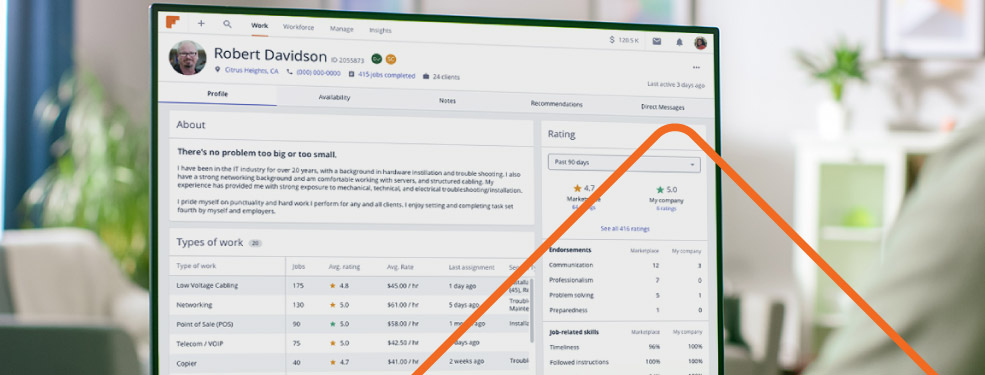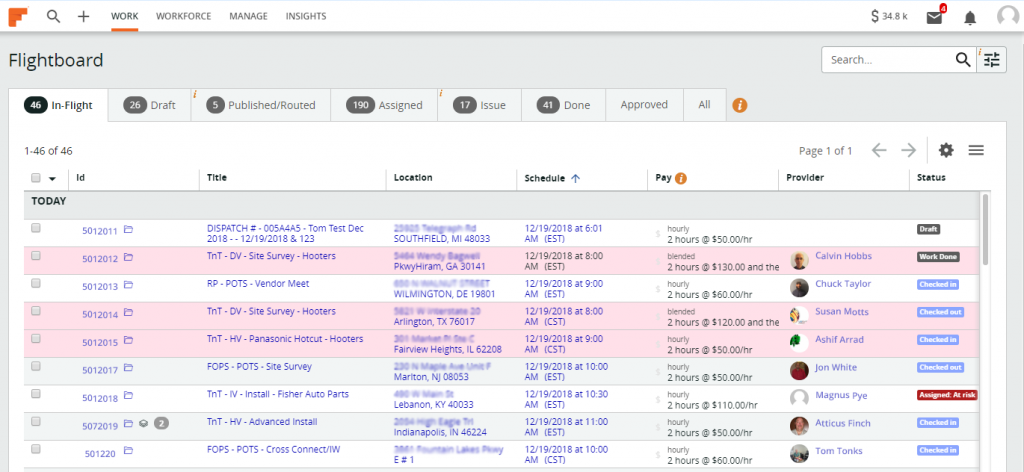
How to improve multi-site service delivery
December 20, 2018
Delivering multi-site installation and repair programs can be tedious. Securing service contracts with major retailers is an amazing opportunity for any business. But, it can be a disaster if the right systems aren’t in place. Due to the unique nature of high-volume, low-scrutiny work, there is significant room for error. There are two major pain points when delivering multi-site services: finding technicians and monitoring each site’s progress.
The nature of multi-site services
Multi-site services generally require the same skillset at several different locations over a period of time. Because the same skills are used at each site, service companies can send the same technician to a group of sites. But managing this type of work can be difficult for a few reasons:
- Creating a ticket for each site is cumbersome
- Assigning a technician to each individual site is inefficient
- Monitoring multiple sites every day is nearly impossible
Because multi-site services require a detail-oriented approach across hundreds or thousands of locations, it’s important to implement the right processes.
Find multi-site service technicians
The number one concern for multi-site services is finding technicians to staff hundreds of locations. The cost of sending full-time, W2 employees to multiple regions gets expensive quick. Employees also don’t want to spend half their day driving to multiple locations. And, most multi-site service companies don’t have employees in every city their clients need to service. However, multi-site projects have the unique advantage of economies of scale. The more times a technician repeats a job, the faster they become.
The solution: use the same contract technician for multiple sites, and a different technician for each region. This cuts down on employer costs and makes technicians’ jobs easier. Contract technicians generally prefer to cover a region instead of just one site. After servicing one or two locations, technicians can often complete work at remaining locations much faster having worked on similar sites. Additionally, technicians often travel less by servicing several locations in one day rather than driving out to a site and back for individual work orders.
Finding technicians used to be difficult. Dispatchers would dispatch a work order for each site, and technicians would request them individually. Dispatchers had to hope their technicians were located within reasonable proximity to each site. Today, companies can use software like Field Nation to dispatch multi-site work orders that consist of multiple locations in the same geographic area, with individual job-site specifics, at once. Technicians can request this work and have their entire day, week, or month planned out in one place. And, companies don’t need to search for a technician for each site – it’s all covered.
Monitor multiple sites from a single interface
The second barrier to on-site services is the complexity of monitoring each individual site. When servicing hundreds or thousands of sites across the country it is easy for a site to slip through the cracks.
To prevent any mishaps, companies need to monitor everything in one place. With Field Nation, companies can log in and see all their active work on one screen. Here companies can see the status of each work order including any that are “at risk” or missing an assignment.
By using software like Field Nation, monitoring multi-site service program delivery becomes easy.
Field Nation brings efficiency to multi-site projects
Multi-site services do not need to be cumbersome. With Field Nation, you can use multi-site work orders to group sites based on geographic location and assign them to one technician. And, you can easily find thousands of technicians across North America.
Ready to get started? Sign up.
RELATED RESOURCES
More from the field
- Business Growth
- Control Costs
- Success Story
- Field Service
- Labor Marketplace
- Blog
- Labor Marketplace
- Upcoming Webinar





